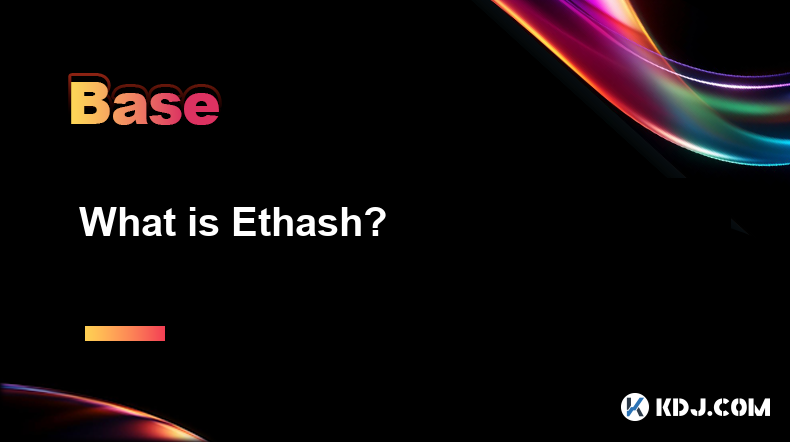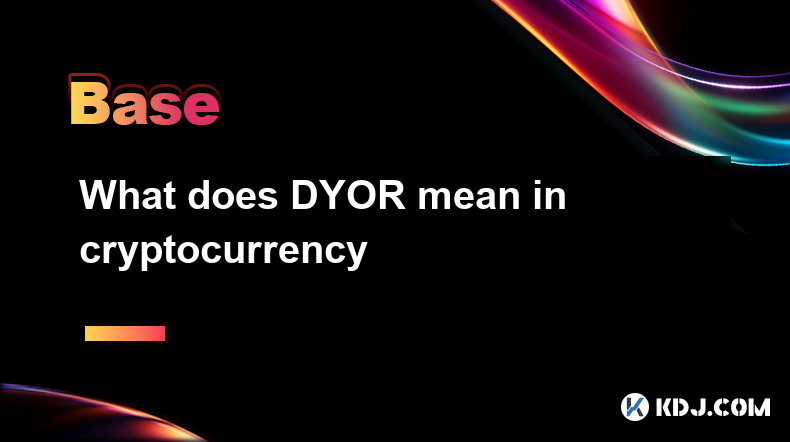-
 Bitcoin
Bitcoin $84,650.6039
1.12% -
 Ethereum
Ethereum $1,598.2028
1.34% -
 Tether USDt
Tether USDt $0.9997
-0.03% -
 XRP
XRP $2.1078
1.77% -
 BNB
BNB $587.8170
1.08% -
 Solana
Solana $133.8641
6.87% -
 USDC
USDC $1.0002
0.01% -
 TRON
TRON $0.2474
-2.42% -
 Dogecoin
Dogecoin $0.1566
2.47% -
 Cardano
Cardano $0.6212
2.83% -
 UNUS SED LEO
UNUS SED LEO $9.4611
0.96% -
 Chainlink
Chainlink $12.5054
3.10% -
 Avalanche
Avalanche $19.3976
3.15% -
 Toncoin
Toncoin $2.9605
3.61% -
 Stellar
Stellar $0.2389
1.75% -
 Shiba Inu
Shiba Inu $0.0...01186
1.92% -
 Sui
Sui $2.1056
2.04% -
 Hedera
Hedera $0.1604
2.35% -
 Bitcoin Cash
Bitcoin Cash $332.3429
4.62% -
 Polkadot
Polkadot $3.6316
3.71% -
 Litecoin
Litecoin $75.2379
1.57% -
 Hyperliquid
Hyperliquid $16.7140
10.27% -
 Dai
Dai $0.9999
-0.01% -
 Bitget Token
Bitget Token $4.3636
0.77% -
 Ethena USDe
Ethena USDe $0.9991
-0.02% -
 Pi
Pi $0.6066
0.02% -
 Monero
Monero $217.4747
0.05% -
 Uniswap
Uniswap $5.2126
1.45% -
 Pepe
Pepe $0.0...07297
2.27% -
 OKB
OKB $50.9568
-1.99%
What is Ethash?
Ethash, Ethereum's ASIC-resistant PoW algorithm, uses a memory-hard DAG to secure the network and promote decentralized mining, but will be obsolete post-Ethereum 2.0.
Apr 08, 2025 at 09:14 am

Ethash is the proof-of-work (PoW) algorithm used by the Ethereum blockchain to secure its network and validate transactions. It was designed to be ASIC-resistant, meaning it aims to prevent the dominance of specialized mining hardware, thereby promoting a more decentralized mining ecosystem. Ethash is a crucial component of Ethereum's mining process, and understanding its mechanics can provide insights into the network's security and operational efficiency.
The Origins and Purpose of Ethash
Ethash was introduced with the launch of Ethereum in 2015. The primary goal behind its development was to create a mining algorithm that would be resistant to the centralization that often occurs with ASICs (Application-Specific Integrated Circuits). ASICs are specialized hardware designed to perform specific tasks, such as mining cryptocurrencies, much more efficiently than general-purpose hardware like CPUs and GPUs. By making Ethash ASIC-resistant, Ethereum aimed to ensure that mining remained accessible to a broader range of participants, thereby maintaining a more decentralized network.
How Ethash Works
Ethash operates by requiring miners to solve complex mathematical puzzles to validate transactions and add them to the blockchain. The algorithm uses a Directed Acyclic Graph (DAG) to generate these puzzles. The DAG is a large dataset that is updated every epoch, which is approximately every 30,000 blocks or about two weeks. Miners must download and store the current DAG to participate in the mining process.
- Download the DAG: Miners need to download the latest DAG file, which can be several gigabytes in size.
- Generate a Hash: Miners use the DAG to generate a hash that meets the network's difficulty target.
- Validate Transactions: Once a valid hash is found, the miner can add a block of transactions to the blockchain and receive the associated rewards.
The Role of the DAG in Ethash
The DAG is a critical component of Ethash. It is a large, pre-generated dataset that miners use to create the cryptographic puzzles they need to solve. The DAG is designed to be memory-hard, meaning it requires a significant amount of memory to compute, which is one of the reasons Ethash is considered ASIC-resistant. The memory requirement makes it difficult for ASICs to be designed specifically for Ethash, as they would need to include large amounts of memory, which is not cost-effective.
Mining with Ethash
Mining with Ethash involves using a computer's GPU or CPU to solve the cryptographic puzzles generated by the DAG. While GPUs are generally more efficient for mining, CPUs can also be used, albeit with lower performance. Here's a step-by-step guide on how to start mining with Ethash:
- Choose a Mining Software: Select a mining software that supports Ethash, such as Geth, Parity, or Ethminer.
- Set Up a Wallet: Create an Ethereum wallet to receive your mining rewards.
- Join a Mining Pool: Consider joining a mining pool to increase your chances of earning rewards more consistently.
- Configure Your Mining Software: Set up your mining software with the appropriate settings, including your wallet address and the mining pool's URL.
- Start Mining: Launch the mining software and begin solving the Ethash puzzles.
The Impact of Ethash on Ethereum's Security
Ethash plays a vital role in securing the Ethereum network. By requiring miners to solve complex puzzles, it ensures that the network remains secure against attacks such as double-spending and 51% attacks. The ASIC-resistant nature of Ethash also helps to maintain a decentralized mining ecosystem, which is crucial for the network's overall security and resilience.
Ethash and Ethereum's Transition to Proof of Stake
It's important to note that Ethereum is transitioning from a proof-of-work (PoW) consensus mechanism, which uses Ethash, to a proof-of-stake (PoS) mechanism called Ethereum 2.0. This transition, known as "The Merge," will eventually render Ethash obsolete for Ethereum's mainnet. However, Ethash will continue to be relevant for Ethereum Classic and other Ethereum-based networks that choose to remain on PoW.
Frequently Asked Questions
Q: Can Ethash be mined with a CPU?
A: Yes, Ethash can be mined with a CPU, but it is less efficient than using a GPU. CPUs are generally slower and consume more power per hash, making them less competitive in the mining ecosystem.
Q: How often does the Ethash DAG update?
A: The Ethash DAG updates approximately every 30,000 blocks, which is about every two weeks. Miners need to download the new DAG file each time it updates to continue mining.
Q: Is Ethash completely ASIC-resistant?
A: While Ethash was designed to be ASIC-resistant, some ASICs have been developed for it. However, these ASICs are not as dominant as those for other algorithms like SHA-256, and the memory-hard nature of Ethash still makes it more accessible to GPU miners.
Q: What happens to Ethash after Ethereum's transition to Proof of Stake?
A: After Ethereum's transition to Proof of Stake, Ethash will no longer be used for Ethereum's mainnet. However, it will continue to be used by Ethereum Classic and other Ethereum-based networks that remain on Proof of Work.
Disclaimer:info@kdj.com
The information provided is not trading advice. kdj.com does not assume any responsibility for any investments made based on the information provided in this article. Cryptocurrencies are highly volatile and it is highly recommended that you invest with caution after thorough research!
If you believe that the content used on this website infringes your copyright, please contact us immediately (info@kdj.com) and we will delete it promptly.
- SUI holds firm at $2 as wedge breakout nears
- 2025-04-17 21:15:12
- Dawgz AI ($DAGZ) Shows Strong Presale Momentum, Targeting Breakout Potential After Launch
- 2025-04-17 21:15:12
- Amazon Web Services (AWS) Outage Freezes Cryptocurrency Withdrawals on Binance, KuCoin, and MEXC
- 2025-04-17 21:10:13
- Introducing Initia (INIT) to Binance Launchpool
- 2025-04-17 21:10:13
- How Much Could 2,500 ONDO Tokens Make You by the End of 2025?
- 2025-04-17 21:05:14
- Bitcoin (BTC) Infrastructure Developer Lombard Finance Launches One-Click Staking SDK
- 2025-04-17 21:05:14
Related knowledge

How the Lightning Network improves Bitcoin efficiency
Apr 17,2025 at 08:56pm
The Lightning Network represents a significant advancement in the Bitcoin ecosystem, aiming to address some of the most pressing issues related to transaction speed and cost. By enabling off-chain transactions, the Lightning Network drastically improves Bitcoin's efficiency, allowing for faster and cheaper transactions. This article will explore how the...

Analysis of the KYC process of cryptocurrency exchanges
Apr 17,2025 at 05:07pm
The Know Your Customer (KYC) process is a critical component in the operations of cryptocurrency exchanges. It serves as a regulatory measure to prevent fraud, money laundering, and other illicit activities. KYC procedures are designed to verify the identity of users and ensure compliance with financial regulations. This article delves into the various ...

What does Floor Price mean in the NFT market
Apr 17,2025 at 12:42am
The term Floor Price is a critical concept within the NFT (Non-Fungible Token) market, serving as a key indicator for both buyers and sellers. In essence, the floor price represents the lowest price at which an NFT from a particular collection is currently listed for sale on a marketplace. This price point is crucial for understanding the perceived valu...

How to understand the TVL indicator in DeFi projects
Apr 17,2025 at 03:28pm
Understanding the TVL indicator in DeFi projects is crucial for investors and enthusiasts looking to gauge the health and popularity of decentralized finance platforms. TVL, or Total Value Locked, represents the total amount of assets that are currently staked or locked in a DeFi protocol. This metric serves as a barometer for the trust and interest tha...

What does DYOR mean in cryptocurrency
Apr 17,2025 at 03:00pm
DYOR, or 'Do Your Own Research,' is a crucial mantra in the cryptocurrency community. It emphasizes the importance of individuals conducting their own thorough investigations before making any investment decisions. In the fast-paced and often volatile world of cryptocurrencies, relying solely on others' advice or the hype surrounding a particular coin c...

What is Alpha? How to find Alpha opportunities?
Apr 16,2025 at 12:42pm
What is Alpha?Alpha is a term widely used in the financial world, including the cryptocurrency market, to describe the ability of an investment to outperform a benchmark. In the context of cryptocurrencies, alpha refers to the excess return an investor achieves over the market's average return. For example, if the overall crypto market grows by 10% in a...

How the Lightning Network improves Bitcoin efficiency
Apr 17,2025 at 08:56pm
The Lightning Network represents a significant advancement in the Bitcoin ecosystem, aiming to address some of the most pressing issues related to transaction speed and cost. By enabling off-chain transactions, the Lightning Network drastically improves Bitcoin's efficiency, allowing for faster and cheaper transactions. This article will explore how the...

Analysis of the KYC process of cryptocurrency exchanges
Apr 17,2025 at 05:07pm
The Know Your Customer (KYC) process is a critical component in the operations of cryptocurrency exchanges. It serves as a regulatory measure to prevent fraud, money laundering, and other illicit activities. KYC procedures are designed to verify the identity of users and ensure compliance with financial regulations. This article delves into the various ...

What does Floor Price mean in the NFT market
Apr 17,2025 at 12:42am
The term Floor Price is a critical concept within the NFT (Non-Fungible Token) market, serving as a key indicator for both buyers and sellers. In essence, the floor price represents the lowest price at which an NFT from a particular collection is currently listed for sale on a marketplace. This price point is crucial for understanding the perceived valu...

How to understand the TVL indicator in DeFi projects
Apr 17,2025 at 03:28pm
Understanding the TVL indicator in DeFi projects is crucial for investors and enthusiasts looking to gauge the health and popularity of decentralized finance platforms. TVL, or Total Value Locked, represents the total amount of assets that are currently staked or locked in a DeFi protocol. This metric serves as a barometer for the trust and interest tha...

What does DYOR mean in cryptocurrency
Apr 17,2025 at 03:00pm
DYOR, or 'Do Your Own Research,' is a crucial mantra in the cryptocurrency community. It emphasizes the importance of individuals conducting their own thorough investigations before making any investment decisions. In the fast-paced and often volatile world of cryptocurrencies, relying solely on others' advice or the hype surrounding a particular coin c...

What is Alpha? How to find Alpha opportunities?
Apr 16,2025 at 12:42pm
What is Alpha?Alpha is a term widely used in the financial world, including the cryptocurrency market, to describe the ability of an investment to outperform a benchmark. In the context of cryptocurrencies, alpha refers to the excess return an investor achieves over the market's average return. For example, if the overall crypto market grows by 10% in a...
See all articles























































































